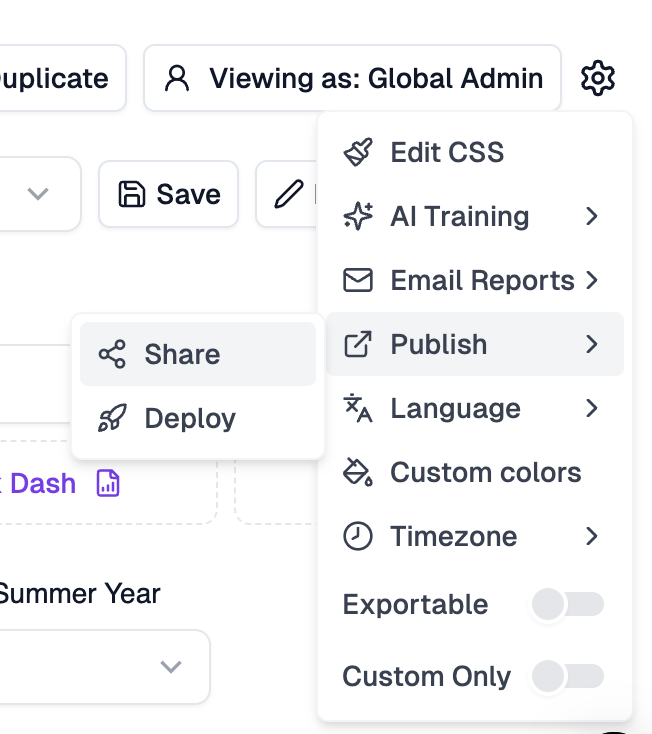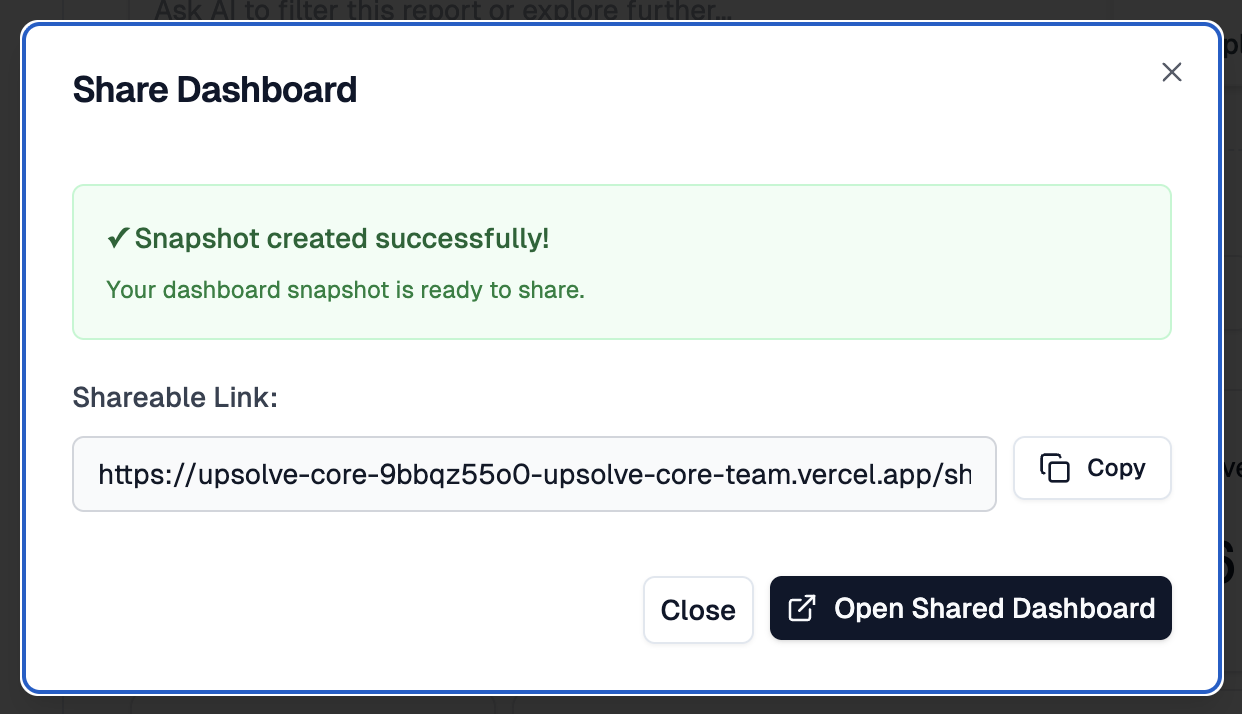Skip to main contentStatic Dashboards let you generate immutable, time-stamped snapshots of any dashboard for distribution. These snapshots are perfect for audits, board reports, monthly close, or any case where recipients should see a fixed view that won’t change as data updates.
What is a Static Dashboard?
- A static dashboard is a frozen snapshot of a dashboard at a specific point in time
- It’s accessible via a secure, shareable link
- It does not update when underlying data changes
- Great for regulatory/compliance reporting, one-off reviews, or archiving

Workflow: Create and Share a Static Dashboard Link
- Open any dashboard in the Hub
- Click the “Share” or “Create static snapshot” action in the header
- Confirm included filters and time range
- Generate the static snapshot
- Copy the secure link and share it with stakeholders
Filter and Tenant Persistence
Static dashboard snapshots capture and preserve the exact state of the dashboard at the time of creation:
- Dashboard Filters: Any filters applied to the dashboard when you create the snapshot will be locked into the static view. The snapshot will always show data filtered according to those values, regardless of future changes to the dashboard.
- For one-time snapshots created via the “Create static snapshot” button, all date filters (whether relative or static) are resolved to their absolute values at the moment of creation.
- For scheduled reports, relative date filters (such as “Last 7 Days”) are recalculated each time the schedule runs. See the Schedule Reports documentation for more details.
- Tenant Selection: If you have selected a specific tenant using the “View as” feature when creating the snapshot, the static dashboard will be scoped to that tenant’s data permissions. This ensures the snapshot only includes data that tenant is authorized to see.
This makes static snapshots ideal for creating tenant-specific reports, filtered views for different audiences, or compliance documentation that requires fixed data scoping.



Best Practices
- Use for board packs, MBR/QBR, audits, and month-end close
- Include the snapshot timestamp in your email or document
- Use static snapshots when downstream readers shouldn’t need to log in or to see changing numbers



